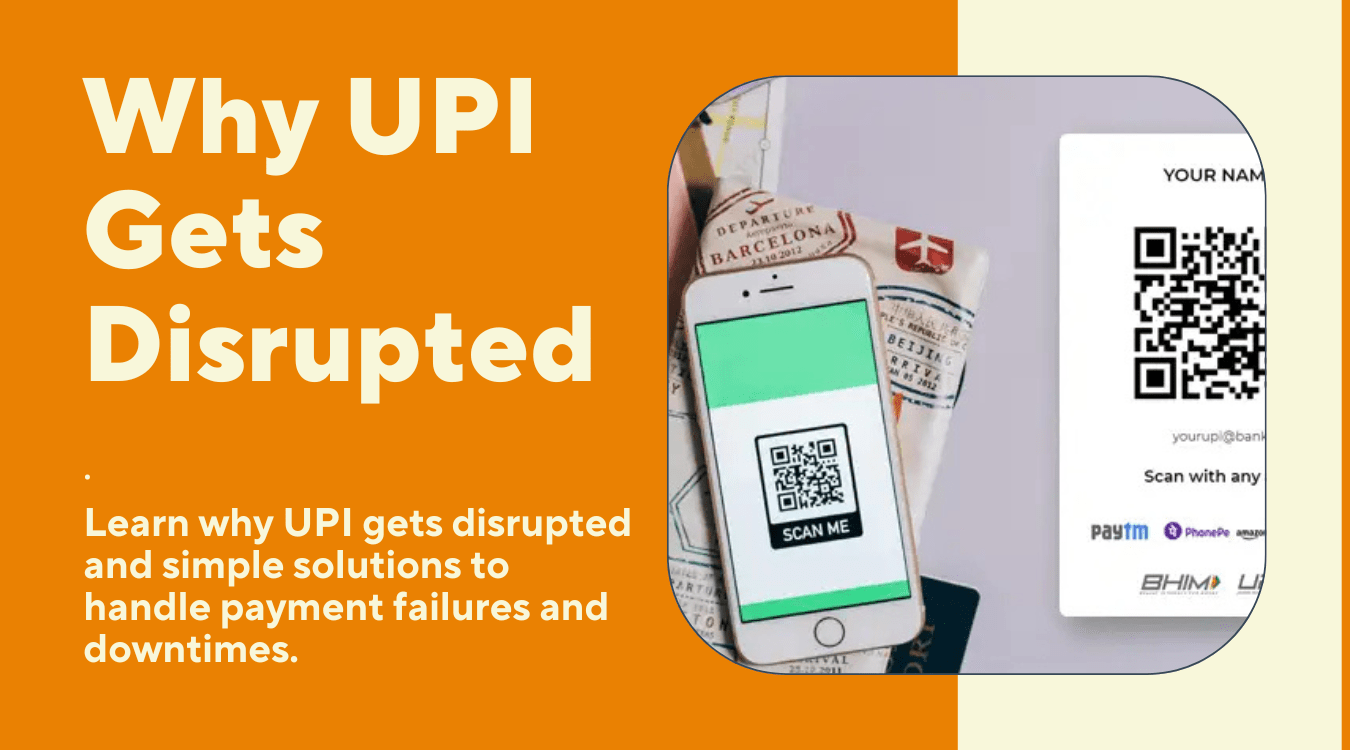The Unified Payments Interface (UPI) has revolutionized digital payments in India, making transactions quick, seamless, and accessible to millions. Whether it’s for shopping, paying bills, or transferring funds, UPI has become a go-to solution for users. However, like any technology, UPI is not immune to occasional outages and disruptions. But what causes UPI to go down, and how do we deal with it when it happens?
1. Technical Glitches and Server Issues
The most common reason for UPI disruptions is technical glitches. UPI is an intricate system that involves various stakeholders, including banks, payment service providers, and intermediaries. These components must communicate effectively to complete transactions. If any of these servers experience issues, it can cause partial or total downtime for UPI services.
For instance, if a payment gateway like Google Pay, Paytm, or PhonePe faces technical difficulties with their servers, the entire payment flow can be interrupted. This can lead to failed transactions, login errors, or delays in fund transfers. Even the National Payments Corporation of India (NPCI), which oversees UPI, can experience outages due to technical issues, affecting millions of users at once.

2. High Traffic and Overload
During periods of high demand, UPI faces immense traffic due to a surge in transactions. Major festivals, sales events, or government services can cause a sudden spike in UPI transactions. When the transaction load exceeds the capacity of the system, UPI services may slow down or fail to process transactions.
During peak hours or national events, the increased number of people trying to use UPI can overwhelm servers, causing delays or even temporary outages. This was evident when UPI services experienced disruption in the evening, causing a surge of complaints about failed payments and slow transaction processing.
3. Connectivity Issues
Another reason UPI might experience downtime is due to network connectivity problems. Users with poor internet connections or network issues may find it difficult to complete transactions. Similarly, if there’s a large-scale issue with the internet infrastructure, such as outages in cellular networks or fiber optics, UPI services can be impacted.
In many cases, users may assume the problem is with UPI itself, but the issue might lie with the internet connection or local network problems. This is why ensuring a stable connection is essential when using UPI for transactions.

4. Bank-Specific Problems
Sometimes, disruptions in UPI services are specific to certain banks or payment platforms. For example, banks may face issues with their internal systems, which can affect their UPI transactions. Issues like fund transfer delays, online banking interruptions, or mobile banking downtimes may happen when the bank’s systems are undergoing maintenance or experiencing technical difficulties.
State Bank of India (SBI) users, for instance, often experience issues with fund transfers and online banking during UPI disruptions. Such problems can stem from the bank’s server outages or maintenance periods, affecting users trying to process UPI payments.
5. Maintenance and Upgrades
As with any system, UPI undergoes regular maintenance and upgrades to improve its performance and security. While these updates are necessary to ensure the system’s integrity, they can occasionally cause temporary disruptions. During maintenance windows, certain features or services may be temporarily unavailable, resulting in UPI outages or delays.
Typically, these disruptions are brief, but if not communicated well to the public, they can cause confusion among users, who may not understand why the service is down.
6. Security Threats and Fraud Prevention
UPI is built with strong security measures to protect users from fraud and cyber-attacks. However, when there is a suspicion of fraudulent activity or a security breach, certain UPI services might be temporarily suspended to mitigate risks. These preventive measures help ensure the safety of users’ funds and protect the system from external threats.
During such times, UPI services may be temporarily paused for specific platforms or users, leading to failed transactions or delays. These measures are often short-lived, but they are crucial in maintaining the overall security of the payment ecosystem.
7. External Factors (Third-Party Integration Failures)
UPI also depends on third-party integrations to work efficiently. These third-party services can include payment processors, banks, and other partners that help process payments. If there’s an issue with any of these third-party services, such as a failure in integration or an unexpected downtime, it can result in problems for UPI users.
For example, if a payment processor faces an outage or failure, it can affect the successful processing of payments through UPI-enabled apps like PhonePe, Google Pay, or Paytm.
How to Handle UPI Downtime?
If you experience issues with UPI, here are some quick tips to help:
-
Wait and Try Again: Many UPI issues are temporary and resolve themselves within a few minutes or hours. If your payment doesn’t go through, wait a few minutes and try again.
-
Check Transaction Status: Check the transaction history in your UPI app to see if the transaction has been processed or is still pending. If it’s pending, it may resolve after some time.
-
Verify Your Internet Connection: Ensure your internet connection is stable. UPI transactions require a solid network connection, and connectivity issues can prevent successful payments.
-
Contact Customer Support: If the issue persists, contact your bank or payment app’s customer support. They can provide further guidance and address any concerns you may have.
-
Be Patient: UPI issues are generally short-lived, and service providers work quickly to restore functionality. Avoid retrying transactions multiple times, as it could trigger security alerts or fraud prevention measures.
Conclusion
While UPI has transformed digital payments in India, it’s not immune to occasional disruptions. Whether caused by technical glitches, high traffic, or security measures, UPI service outages can be frustrating for users. However, understanding the causes behind these disruptions can help you stay informed and take the right steps when encountering issues.
As India continues to push towards a cashless economy, ensuring the reliability and stability of UPI remains a top priority. With continued upgrades and improvements, we can expect UPI to remain a cornerstone of India’s digital payments landscape.

